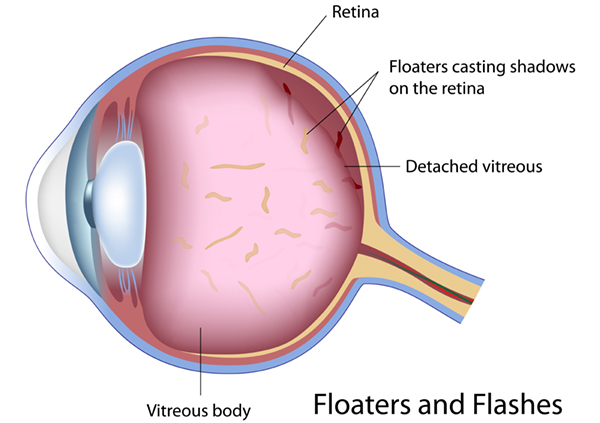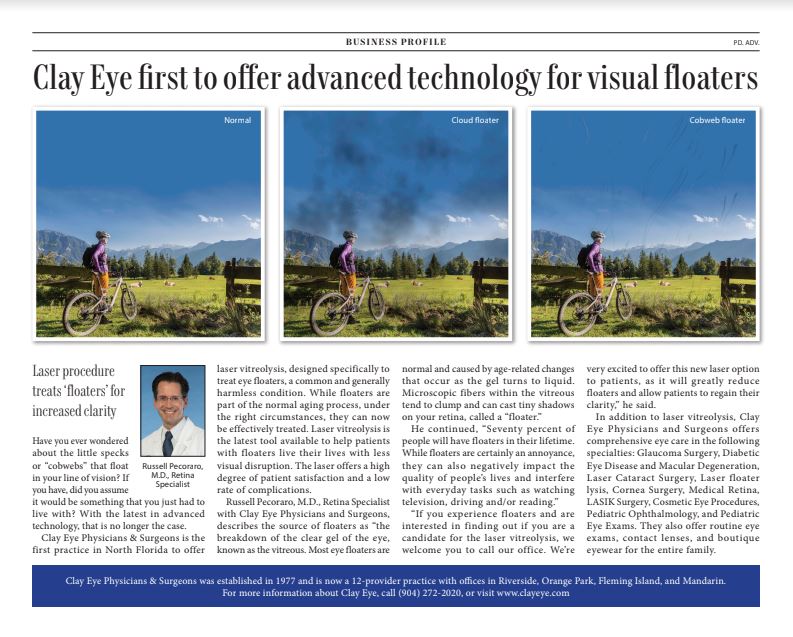Flashes and Floaters
What are Flashes and Floaters?
Flashes of light and floaters in the field of vision occur in healthy people, but may also be a sign of serious problems. If flashes occur suddenly, it may be a sign that the retina is torn. In this case, you should contact your doctor immediately.
Floaters, usually due to a posterior vitreous detachment, are caused by particles that are floating in the vitreous gel and cast shadows on the retina. Floaters may naturally appear with increasing age. However, if floaters occur suddenly, it may be a sign that the retina is torn. You should contact your doctor immediately if you experience such sudden symptoms.




